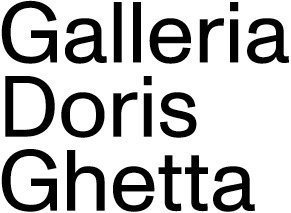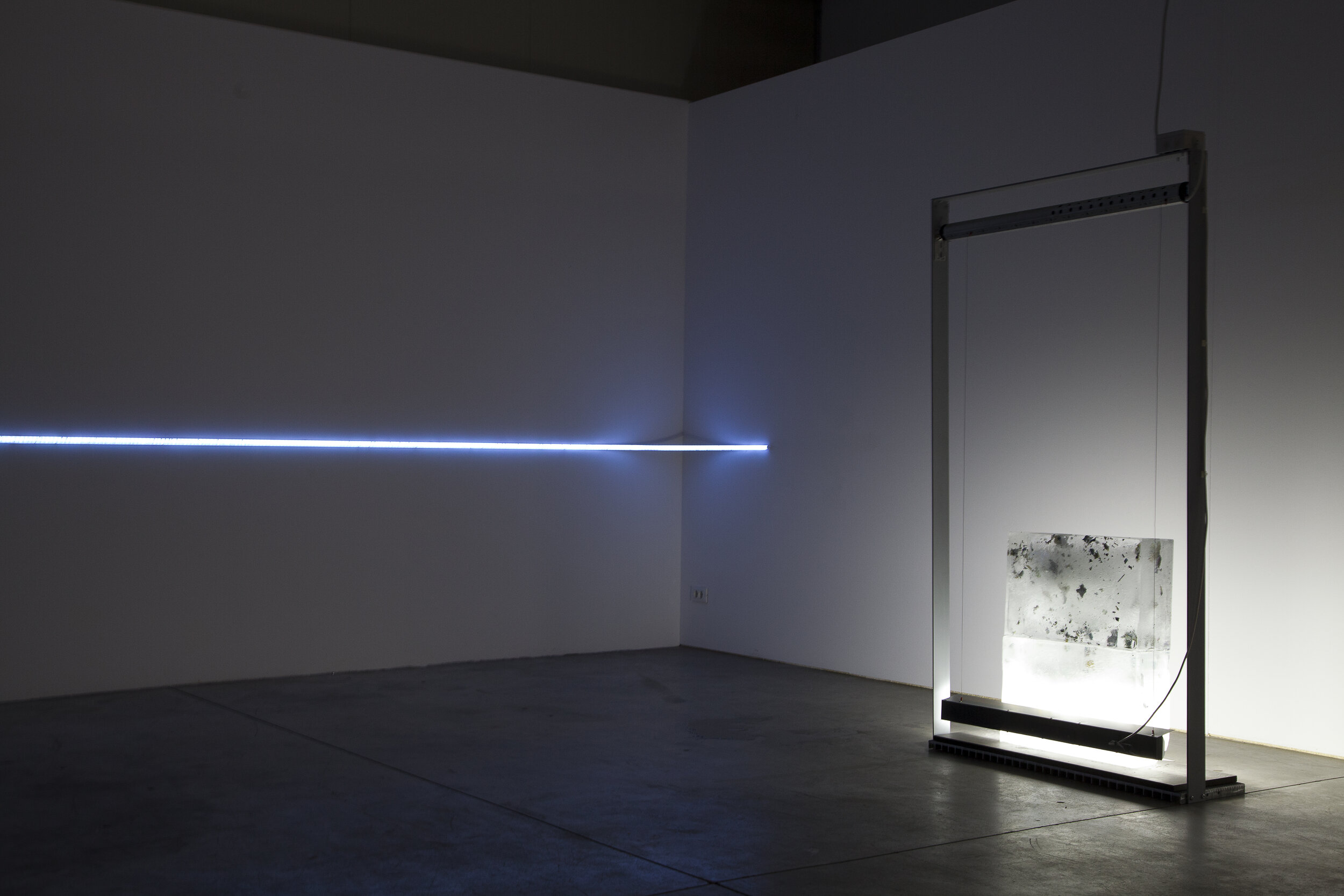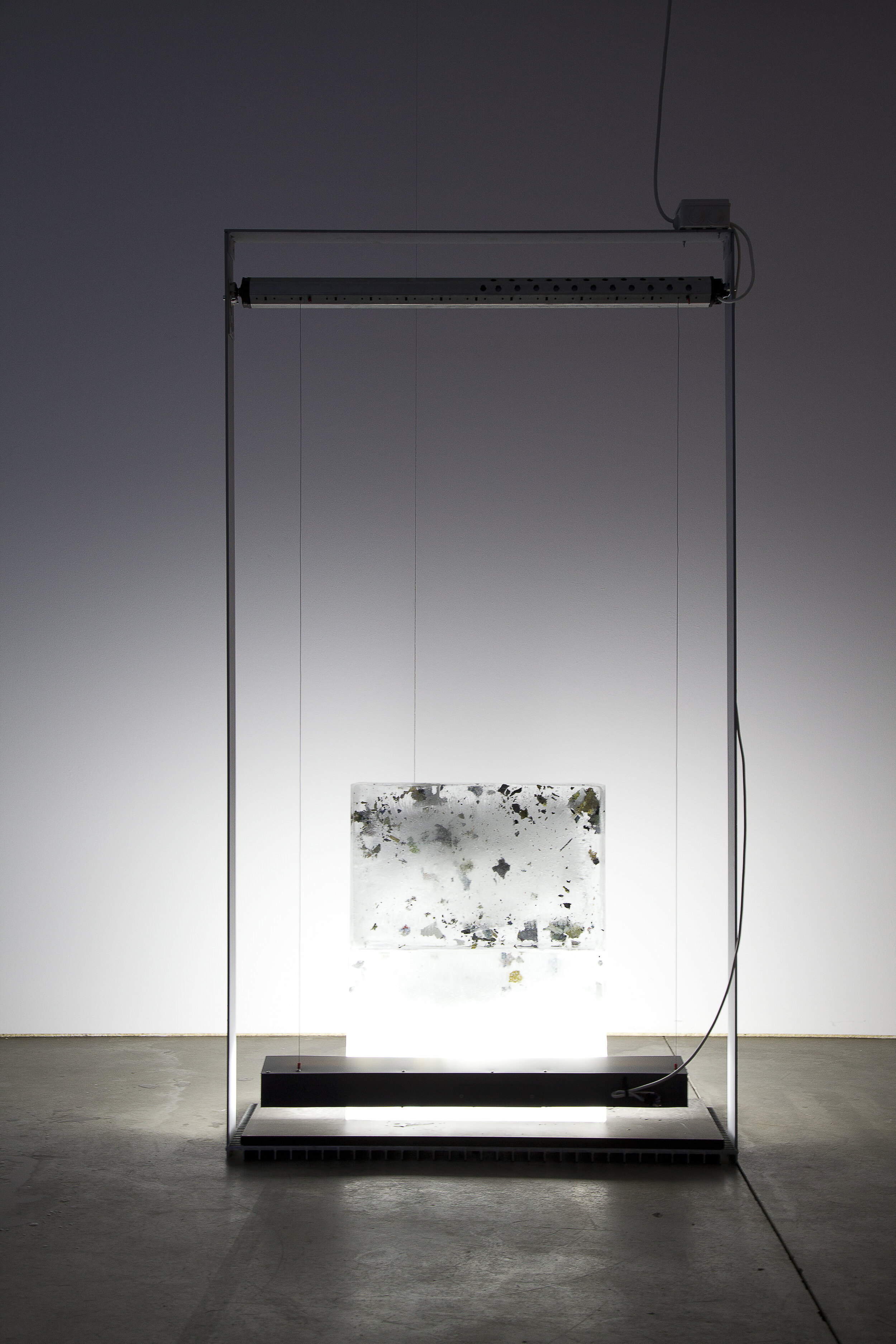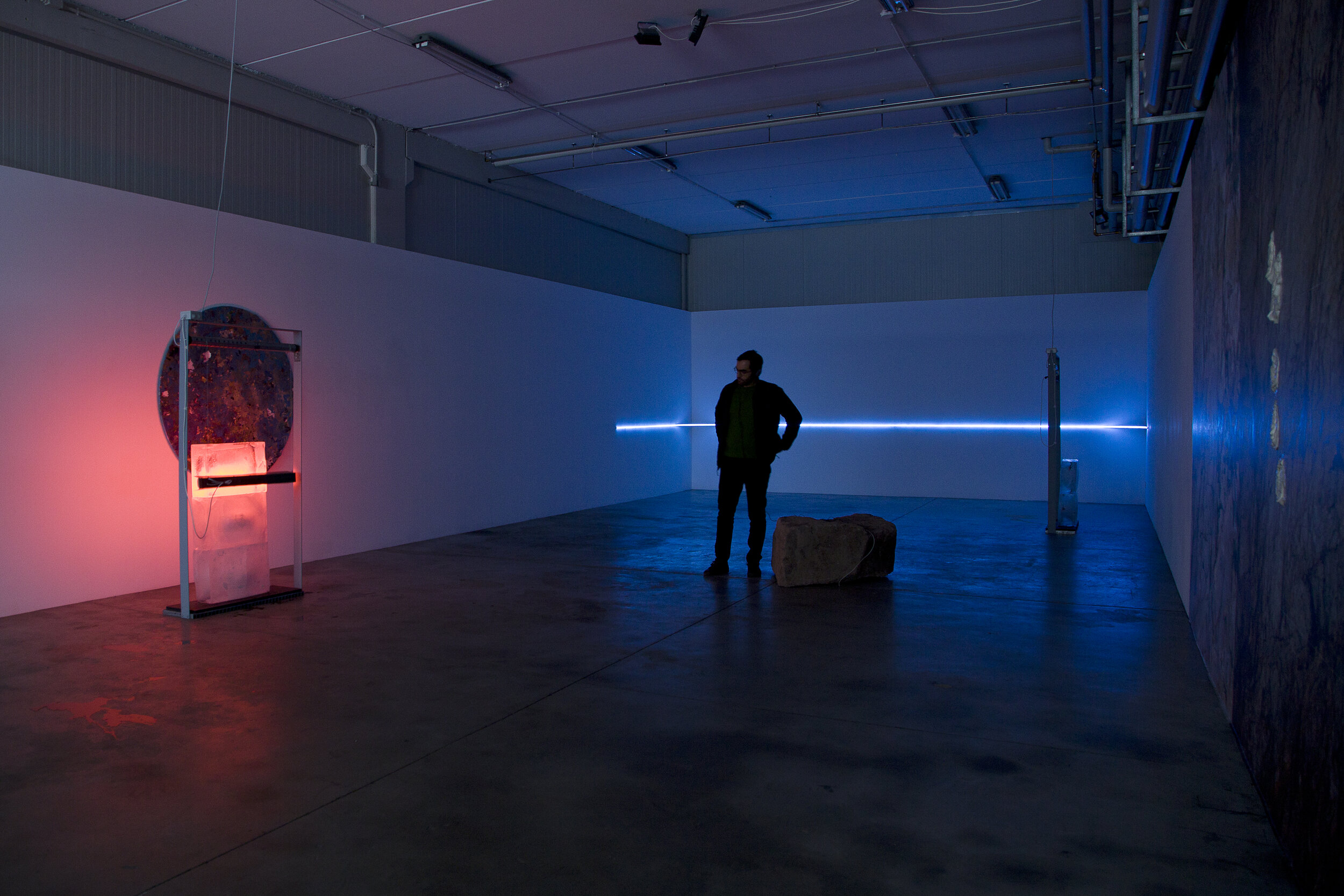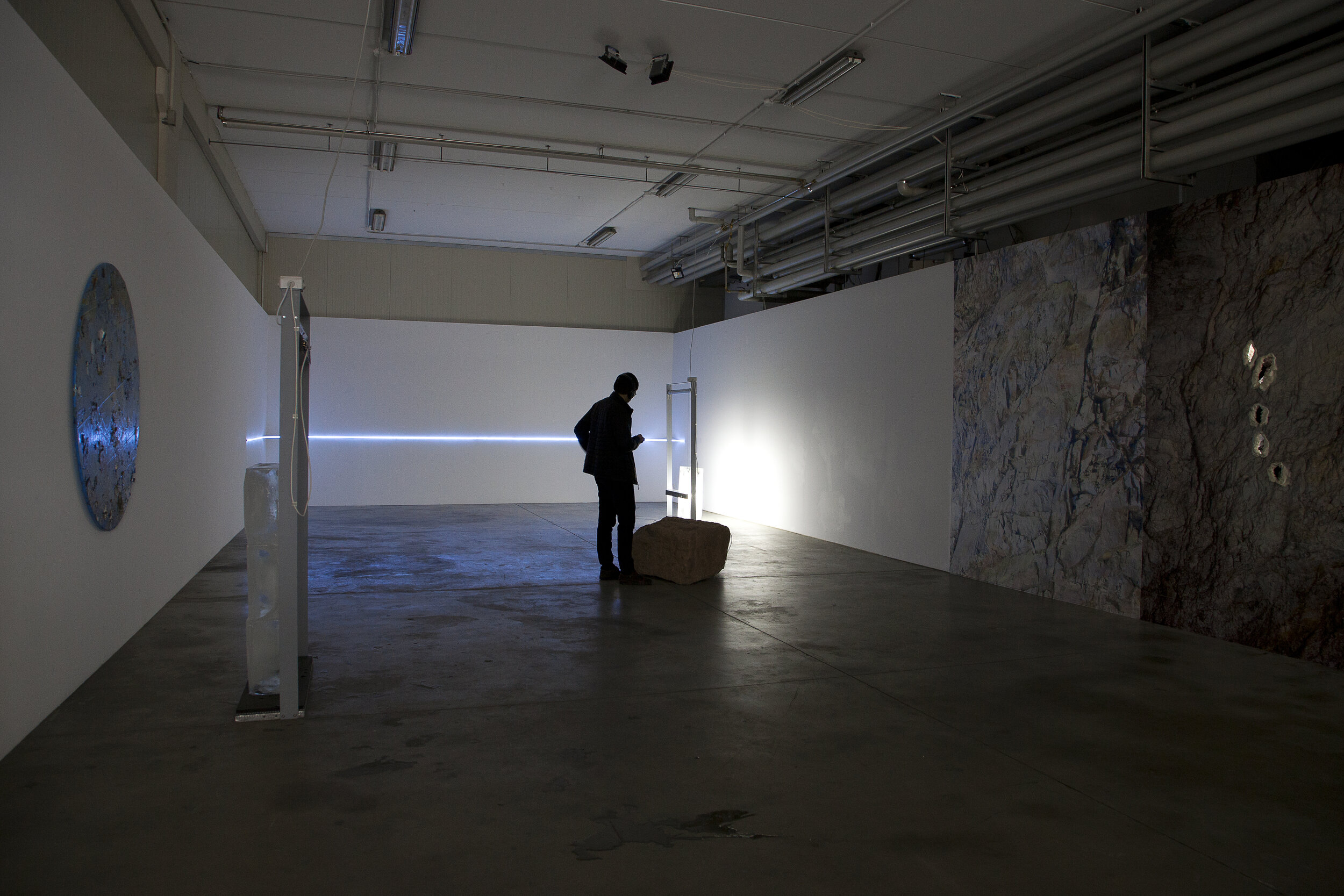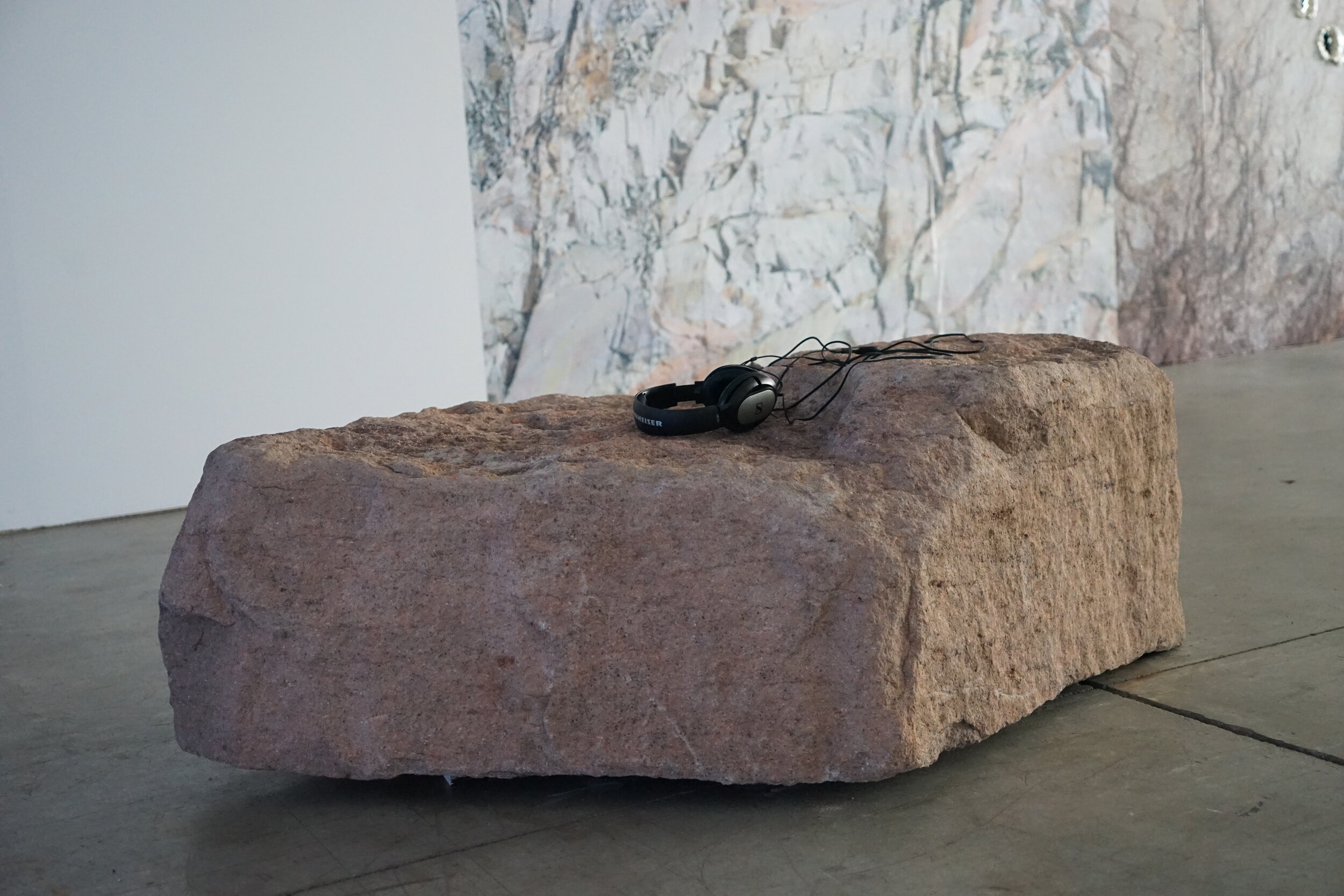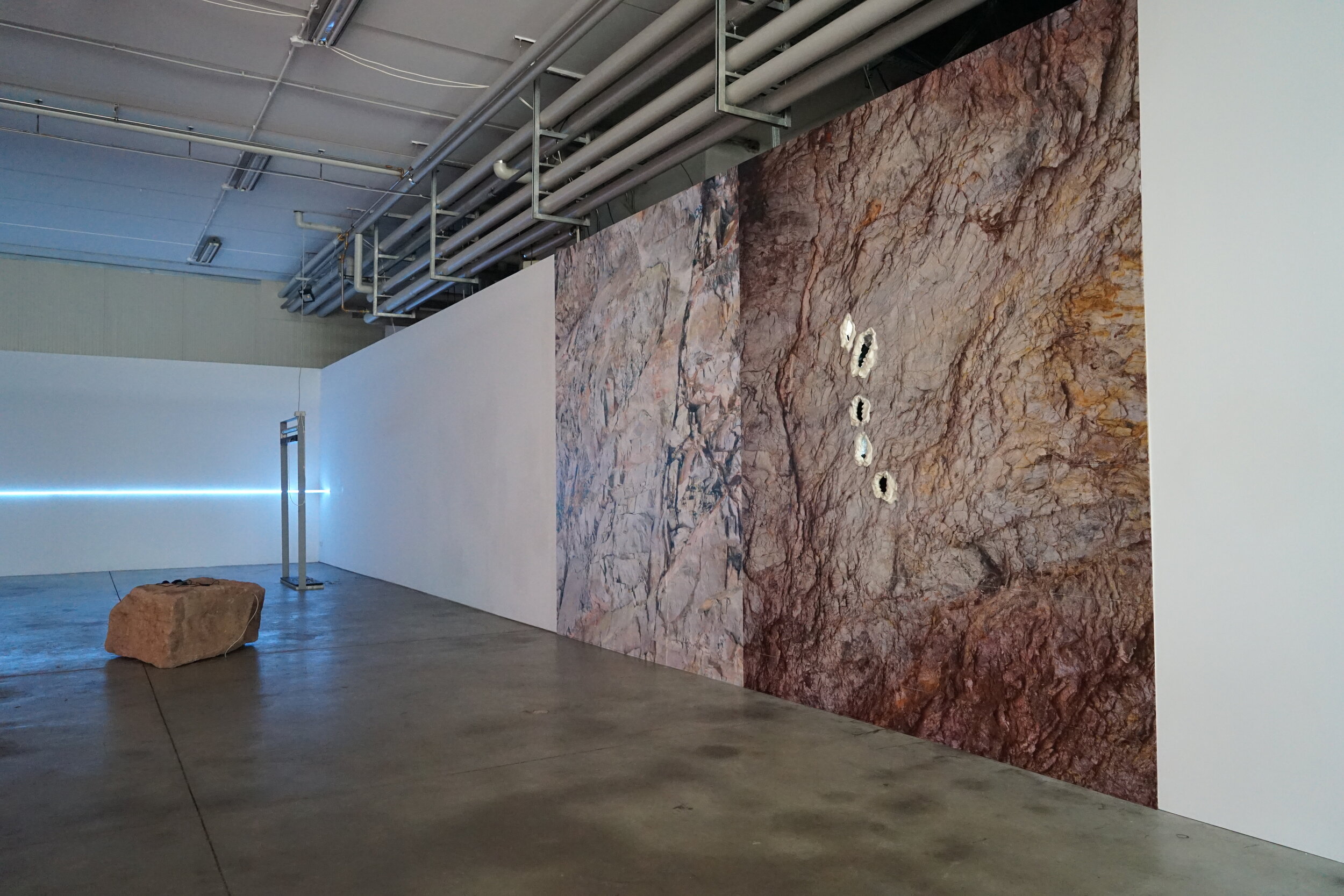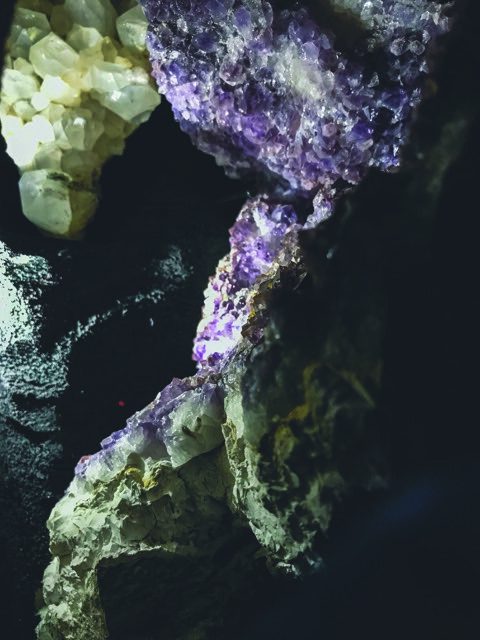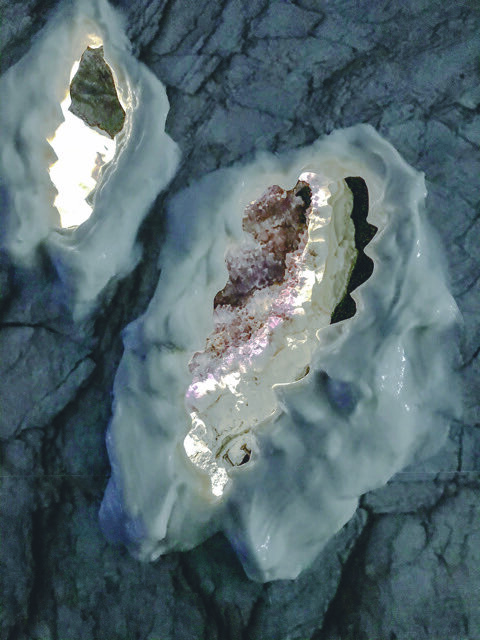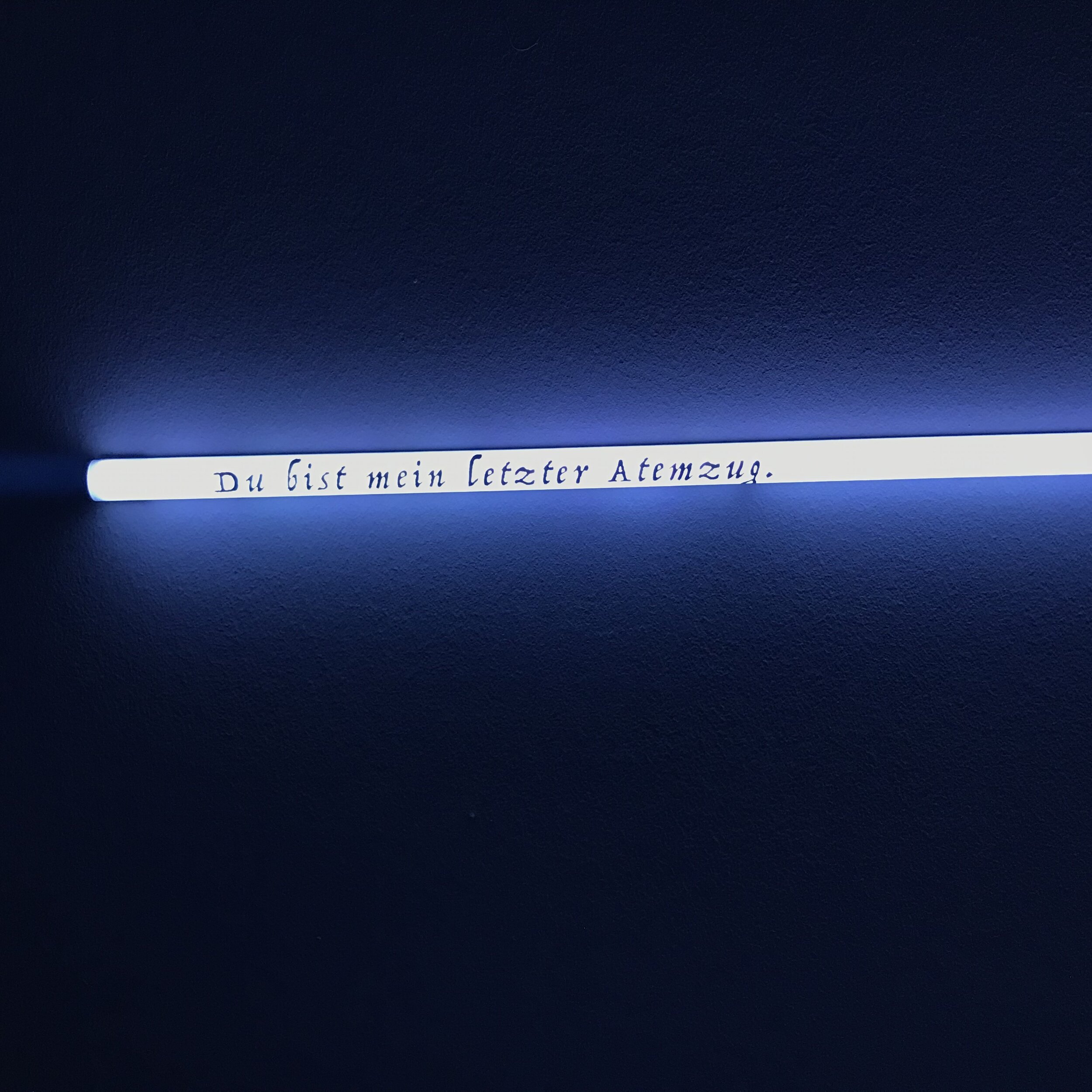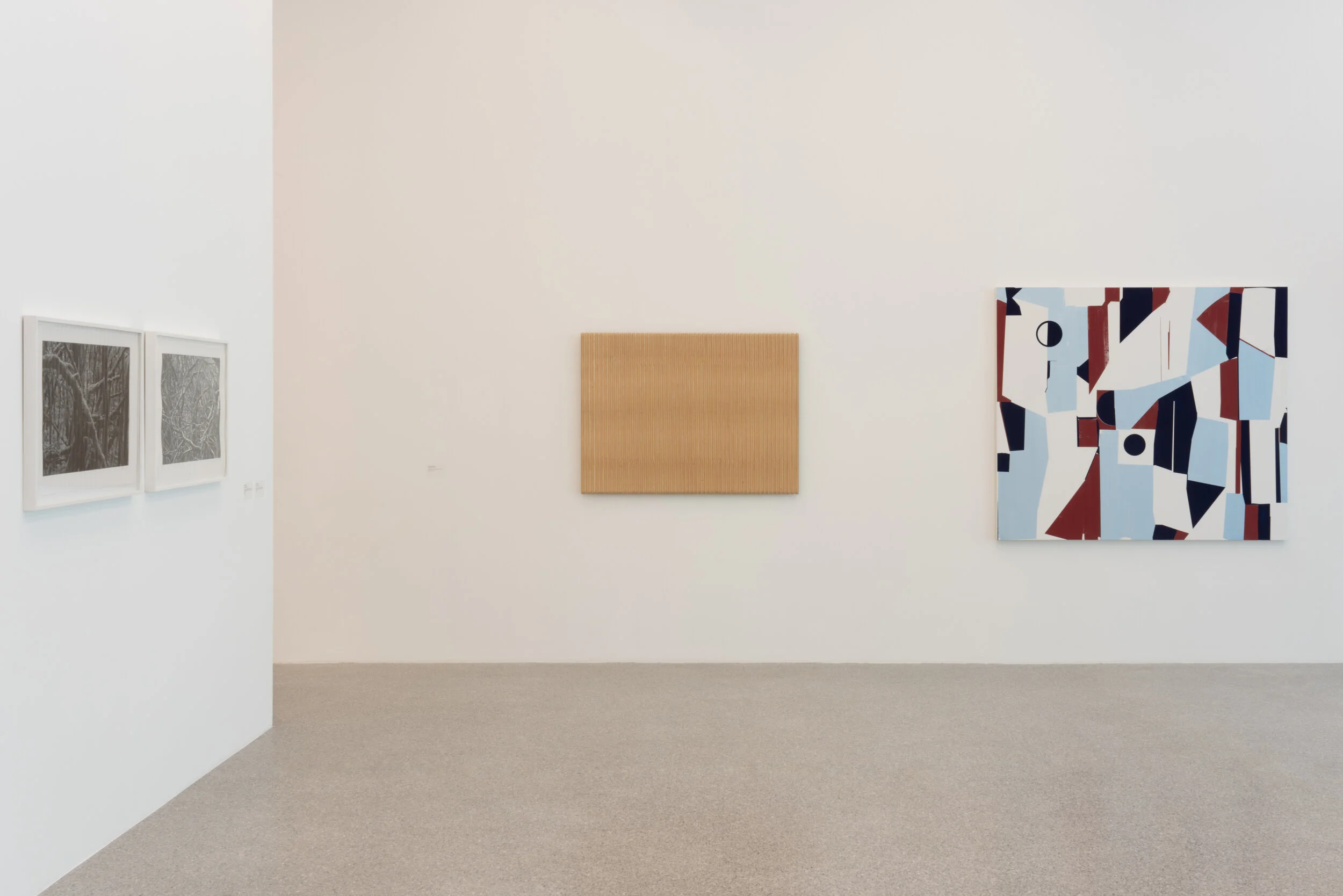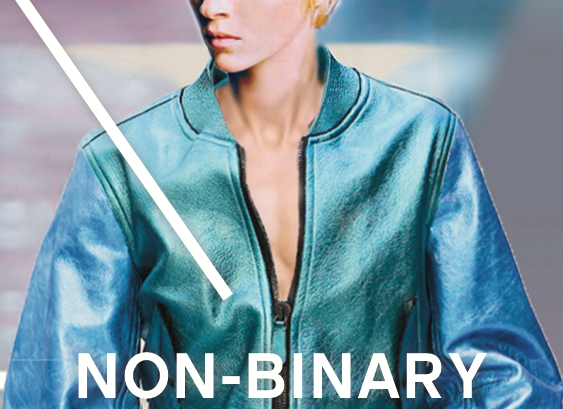Julia Frank
Fine Corsa
07.03.
18.07.20
Ortisei
Geodes are small cavities in the rock, which are generally spherical or ovoidal in shape and lined with crystals. In Italian, the word, geode, may be either masculine or feminine, and its etymology derives directly from the primordial goddess Gea, Geo or Ge, the earth mother, in ancient Greek Γῆ, or Ghê.
Julia Frank’s exhibition fine corsa (End of the Line) opens with a large curtain printed with the image of a blue eye, which looks like the earth (Gea) seen from space. Behind the initial diaphragm, we find ourselves in an artificial geode containing both the cosmogony, the birth of the universe, and the cosmogony, its death. Inside it, instead of crystals, the artist grafts decomposing synthetic films, melting contaminated ice, words evoking change (of habits and climate), and luminous diodes (in the past it was the godhead who brought light, now it is LEDs).
But eventually, a natural element emerges from the synthetic panorama of fine corsa: a crystal. Special conditions of temperature and pressure and the presence of fluids and chemical-physical elements are essential for them to form. It also takes time, a great deal of time. In short, what is necessary is the same mixture of elements that generated human life.
For cosmogony, on the other hand, all it takes is a little poetry, a little time, and a little attention. This is precisely why the crystals are kept in a crack in the wall, which can be seen but not touched. For whatever human beings touch risks being ruined irreparably. The purity of the mineral thus indicates a possible way to salvation or, on the contrary, reminds humans of their impurities.
One leaves Julia Frank’s geode exhibition fascinated and puzzled. It is a bit like visiting the (real) geode of Pulpì, the largest in the world, where a notice at the entrance warns that in order to protect the crystals from deterioration admission is limited to a certain number of visitors and that the temperature, humidity, and carbon dioxide levels are controlled and kept stable by a specially designed system. In order to see a wonder of nature, human beings have broken biological balance but have reconstructed it artificially by pretending that nothing has been broken at all, not knowing how long this fake balance will last.
How long will the illusions we have created last? This is the question that Julia Frank asks us in this exhibition.
Stefano Riba
many thanks to Harald Pechlaner, Privat Sammlung Reinhold Altstätter and Manuel Blaas
Press Release | Comunicato stampa | Presse Text
Works
Interview - Video
Fine corsa - Julia Frank
Interview - Julia Frank
Biography
1988 born in Val Venosta, Italy
Accademia delle Belle Arti in Carrara, Italy
Faculty Alonso Cano, Granada, Spain
Master at the Royal College of Art in London, United Kingdom
